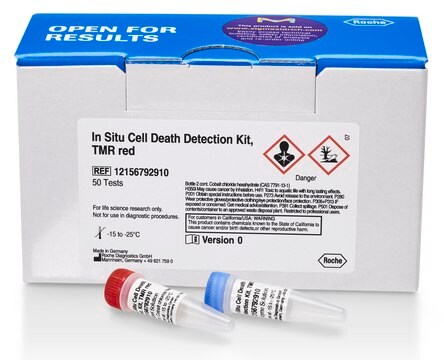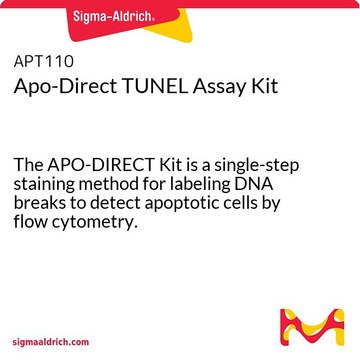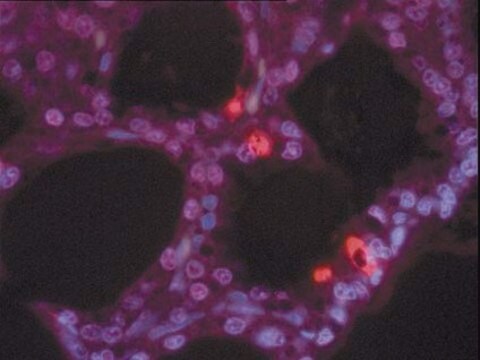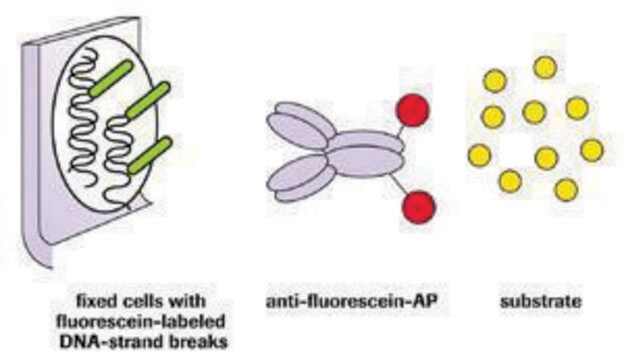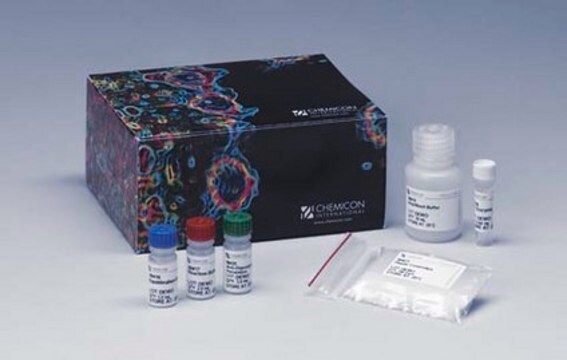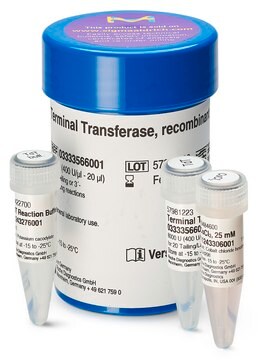Wichtige Dokumente
11767291910
Roche
TUNEL Label Mix
sufficient for 30 tests, pkg of 3 × 550 μL
Synonym(e):
transferase dUTP nick end labeling, tunel
About This Item
Empfohlene Produkte
Form
solution
Qualitätsniveau
Verwendung
sufficient for 30 tests
Verpackung
pkg of 3 × 550 μL
Hersteller/Markenname
Roche
Farbe
colorless
Löslichkeit
water: miscible
Lagertemp.
−20°C
Allgemeine Beschreibung
Anwendung
Angaben zur Herstellung
For one test: Mix 45 μl TUNEL Label with 5 μl TUNEL Enzyme prior to use. For negative control use 50 μl/test TUNEL Label only.
Storage conditions (working solution): Note: The TUNEL reaction mixture (45 μl TUNEL Label with 5 μl TUNEL Enzyme for 1 test) should be prepared just before use, and should not be stored. Keep the TUNEL reaction mixture on ice until use.
Sonstige Hinweise
Signalwort
Danger
H-Sätze
Gefahreneinstufungen
Aquatic Chronic 2 - Carc. 1B Inhalation
Lagerklassenschlüssel
6.1D - Non-combustible acute toxic Cat.3 / toxic hazardous materials or hazardous materials causing chronic effects
WGK
WGK 3
Flammpunkt (°F)
does not flash
Flammpunkt (°C)
does not flash
Hier finden Sie alle aktuellen Versionen:
Analysenzertifikate (COA)
Leider sind derzeit keine COAs für dieses Produkt online verfügbar.
Wenn Sie Hilfe benötigen, wenden Sie sich bitte an Kundensupport
Besitzen Sie dieses Produkt bereits?
In der Dokumentenbibliothek finden Sie die Dokumentation zu den Produkten, die Sie kürzlich erworben haben.
Kunden haben sich ebenfalls angesehen
Unser Team von Wissenschaftlern verfügt über Erfahrung in allen Forschungsbereichen einschließlich Life Science, Materialwissenschaften, chemischer Synthese, Chromatographie, Analytik und vielen mehr..
Setzen Sie sich mit dem technischen Dienst in Verbindung.
